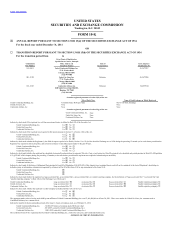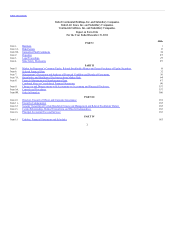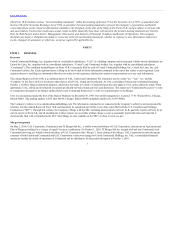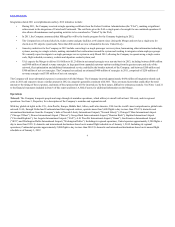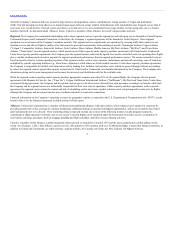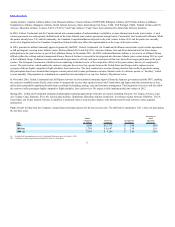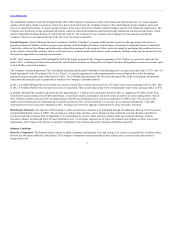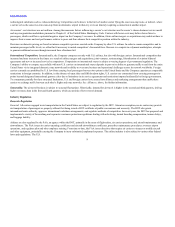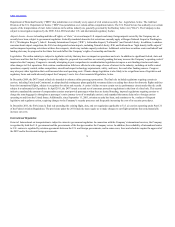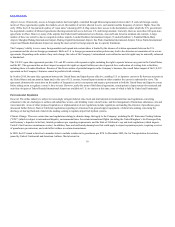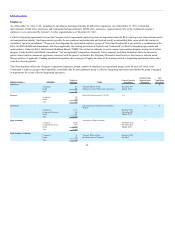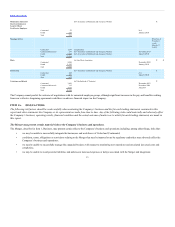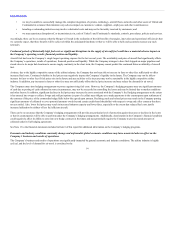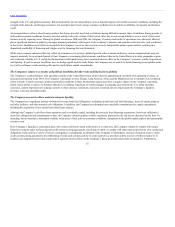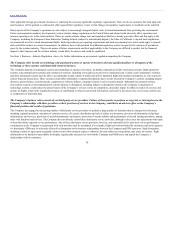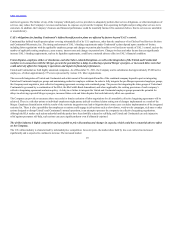United Airlines 2011 Annual Report Download - page 11
Download and view the complete annual report
Please find page 11 of the 2011 United Airlines annual report below. You can navigate through the pages in the report by either clicking on the pages listed below, or by using the keyword search tool below to find specific information within the annual report.
Table of Contents
Historically, access to foreign markets has been tightly controlled through bilateral agreements between the U.S. and each foreign country
involved. These agreements regulate the markets served, the number of carriers allowed to serve each market and the frequency of carriers’ flights. Since the
early 1990s, the U.S. has pursued a policy of “open skies” (meaning all U.S.-flag carriers have access to the destination), under which the U.S. government
has negotiated a number of bilateral agreements allowing unrestricted access between U.S. and foreign markets. Currently, there are more than 100 open skies
agreements in effect. However, many of the airports that United and Continental serve in Europe, Asia and Latin America maintain slot controls. A large
number of these are restrictive due to congestion at these airports. London Heathrow International Airport (“London Heathrow”), Frankfurt Rhein-Main
Airport, Shanghai Pudong International Airport, Beijing Capital International Airport, Sao Paulo Guarhulos International Airport, Tokyo Narita International
Airport and Haneda International Airport are among the most restrictive foreign airports due to capacity limitations.
The Company’s ability to serve some foreign markets and expand into certain others is limited by the absence of aviation agreements between the U.S.
government and the relevant foreign governments. Shifts in U.S. or foreign government aviation policies may lead to the alteration or termination of air service
agreements. Depending on the nature of any such change, the value of the Company’s international route authorities and slot rights may be materially enhanced
or diminished.
The U.S./EU open skies agreement provides U.S. and EU carriers with expansive rights, including the right to operate between any point in the United States
and the EU. The agreement has no direct impact on airport slot rights or airport facilities nor does it provide for a reallocation of existing slots or facilities,
including those at London Heathrow. Because of the diverse nature of potential impacts on the Company’s business, the overall future impact of the U.S./EU
agreement on the Company’s business cannot be predicted with certainty.
In October 2010, the open skies agreement between the United States and Japan became effective, enabling U.S. or Japanese carriers to fly between any point in
the United States and any point in Japan and, in the case of U.S. carriers, beyond Japan to points in other countries the carrier is authorized to serve. The
agreement eliminates the restrictions on the number of frequencies carriers can operate and requires governments in both the United States and Japan to concur
before taking action to regulate a carrier’s fares or rates. However, under the terms of the bilateral agreement, certain points in Japan remain slot restricted and
only four slot pairs at Tokyo Haneda International Airport are available to U.S. air carriers at this time, none of which is held by United and Continental.
Environmental Regulation
The airline industry is subject to increasingly stringent federal, state, local and international environmental laws and regulations concerning
emissions to the air, discharges to surface and subsurface waters, safe drinking water, aircraft noise, and the management of hazardous substances, oils and
waste materials. Areas of either proposed regulations or implementation of new regulations include regulations surrounding the emission of greenhouse gases
(discussed further below), State of California regulations regarding air emissions from ground support equipment, a federal rule-making concerning the
discharge of deicing fluid and a federal rule-making seeking to regulate airport fuel hydrant systems.
There are certain laws and regulations relating to climate change that apply to the Company, including the EU Emissions Trading Scheme
(“ETS”) (which is subject to international dispute), environmental taxes for certain international flights (including the United Kingdom’s Air Passenger Duty
and Germany’s departure ticket tax), limited greenhouse gas reporting requirements, and the State of California’s cap and trade regulations (which impacts
United’s San Francisco maintenance center). In addition, there are land-based planning laws that could apply to airport expansion projects, requiring a review
of greenhouse gas emissions, and could affect airlines in certain circumstances.
In 2009, the EU issued a directive to member states to include aviation in its greenhouse gas ETS. In December 2009, the Air Transportation Association,
joined by United, Continental and American Airlines, filed a lawsuit in
10

